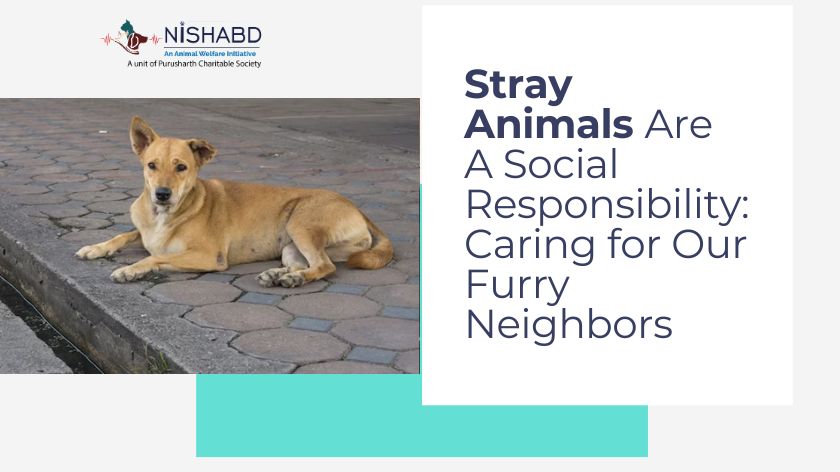Stray Animals Are A Social Responsibility: Caring for Our Furry Neighbors
In the tapestry of life, every thread counts. Stray Dogs, the forgotten fibers, are often overlooked in the intricate patterns of our society. These animals, without a home to call their own, face a daily struggle for survival. But their fate is not theirs alone; it reflects our collective responsibility as a society. In this blog, we’ll delve into the world of stray animals. We’ll start by understanding what homeless animals are and then explore why they represent a profound social responsibility.
What Are Stray Animals?
Stray animals, often called feral animals, are domesticated animals that have lost their homes or been born in the wild without human socialization. They roam our streets, alleys, and countryside, navigating a world of challenges and uncertainties.
Stray animals include dogs, cats, and even larger animals like cows, horses, and goats. They differ from wildlife because they were once part of human households or farms, making them semi-domesticated. Stray animals are the forgotten and abandoned souls of our urban landscapes.
Why Are Stray Animals A Social Responsibility?
- Ethical Responsibility: As a society, we’ve domesticated these animals over generations and created a sense of reliance on them. We’ve selectively bred dogs for companionship and cats for pest control. It’s our moral duty to look after these animals when they’re left to fend for themselves.
- Health and Safety: Stray dogs often suffer from diseases, malnutrition, and injuries. They can pose a health risk to the community, and incidents like dog bites are not uncommon. By caring for these animals, we contribute to the safety of our neighborhoods.
- Quality of Life: Every living being deserves a life of dignity and quality. Animals endure hunger, exposure to harsh weather, and the constant struggle to find food and water. Our responsibility lies in enhancing their quality of life.
- Education and Awareness: Caring for stray animals can be an excellent educational opportunity. It teaches compassion, empathy, and responsibility to younger generations. It’s a tangible way to instill these values in our communities.
- Community Bond: When a society comes together to care for its stray animals, it builds a sense of community and togetherness. It fosters relationships among people who share a common goal.
- Environmental Balance: Stray animals are often considered a nuisance, but they also control certain pests and maintain the ecological balance. We acknowledge their part in our environment by taking responsibility for their welfare.
- Legislative and Policy Frameworks: Advocating for the welfare of stray animals leads to developing legislative and policy frameworks that protect their rights, including initiatives like sterilization and vaccination programs, safe shelters, and penalties for animal cruelty.
Caring for Stray Animals: How Can We Fulfill This Responsibility?
Caring for stray animals involves a multi-faceted approach that requires the combined effort of individuals, communities, and governments. Here are some practical ways to fulfill this social responsibility:
-
- Feeding Programs: Establish community-led feeding programs where volunteers regularly provide food and water to stray dogs.
- Sterilization and Vaccination: Support and participate in sterilization and vaccination drives. These actions are a humane way to control animal populations and prevent the spread of diseases.
- Animal Shelters: Advocate for and support the establishment of animal shelters that provide a haven for stray animals.
- Awareness Campaigns: Use social media and community events to raise awareness about the importance of caring for stray animals.
- Volunteerism: Encourage community members to volunteer their time and resources to support stray animal welfare[1].
- Reporting Abuse: Create a culture where animal abuse is reported and not tolerated. Work with law enforcement to ensure that cruelty cases are dealt with seriously.
Stray dogs are not merely strays but fellow beings sharing our world. Caring for them is a social responsibility that reflects our compassion, ethics, and the values we uphold as a society.
It represents our commitment to creating a more inclusive and humane world. By understanding this responsibility’s essence and actively caring for animals, we weave a more compassionate and harmonious society where no one is left behind. As the threads of our social fabric intertwine, let them weave a tapestry of empathy and responsibility for the betterment of all living beings.
Read our Article: A Guide to Socializing Your Dog: Building Bonds and Confidence

